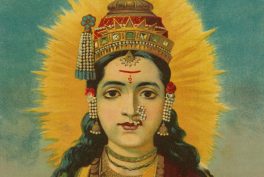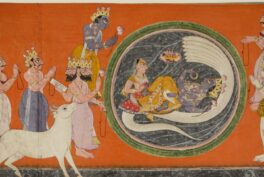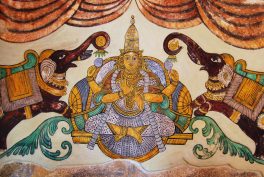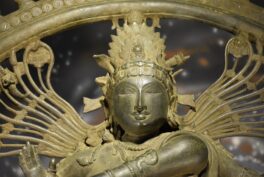The lotus is deeply intertwined with Hindu mythology and deities, appearing in classical literature, temple carvings, and intricate designs. In Hinduism, the flower is associated with creation, birth, and divine energy, often symbolizing the abode or attributes of Gods. Its presence spans centuries, rooted in ancient hymns and texts.
A Symbol of Purity and Transcendence
Growing in muddy water yet blooming pristinely above the surface, the lotus serves as a metaphor for spiritual transcendence and purity. It mirrors life’s challenges, urging individuals to rise above turbulence and strive for higher consciousness. This journey, where murky waters are essential for growth, is echoed not only in Hindu beliefs but also in Buddhism, where the lotus signifies enlightenment and spiritual awakening.
Artistic Expressions of the Lotus
The lotus is an enduring motif in Hindu art, intricately carved into temple walls, pillars, and ceilings, and embedded into paintings and pottery. Its designs often form geometric patterns symbolizing cosmic harmony. In religious sculptures, deities are frequently depicted with the lotus as a throne, an offering, or an ornament, highlighting its integral role in Hindu aesthetics. These representations not only showcase artistic skill but also reinforce the lotus’ symbolic depth.
Vishnu, the Creator
Among Hindu deities, none are more deeply associated with the lotus than Vishnu, the god of preservation and creation. Known as Padma (lotus), Vishnu’s connection is evident in titles like Padmanabha (lotus-navel) and Pundarikaksha (lotus-eyed). The Padma Purana, a significant Hindu text, celebrates his lotus attributes.
Sculptures dating back to the 5th and 6th centuries depict Vishnu holding a lotus, symbolizing his creative power and connection to water. Ancient myths in Shaivism also recount Vishnu offering a lotus from his eye to Shiva during religious rituals.
Lakshmi: The Lotus and Prosperity
Lakshmi, the goddess of wealth and Vishnu’s consort, is often depicted seated on or holding a lotus. The flower, particularly the pink lotus, symbolizes fertility, purity, and auspiciousness. Lakshmi’s association with the lotus underscores abundance and prosperity, cementing her role as a harbinger of good fortune.
Brahma and Saraswati: Knowledge and Creation
In Hindu mythology, Brahma, the god of creation, emerges from a lotus blooming from Vishnu’s navel. This celestial flower, known as the Brahma Kamal, is a symbol of good luck and enlightenment. Saraswati, Brahma’s consort and the goddess of knowledge, is often portrayed with a white lotus, representing wisdom and truth.
Cultural Significance of the Lotus
Beyond its divine associations, the lotus has a lasting presence in Hindu culture. It symbolizes fertility, wisdom, and enlightenment and features prominently in festivals, rituals, and daily worship. As India’s national flower and an emblem of the country’s major political party, the lotus remains a timeless icon of Hindu spirituality and aesthetics.
The lotus continues to inspire and captivate, bridging the ancient and the modern. Its profound meanings make the flower an enduring symbol in Hindu art, culture, and philosophy.
















